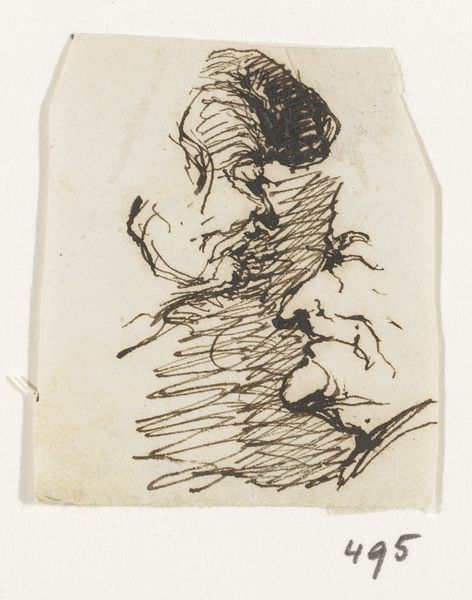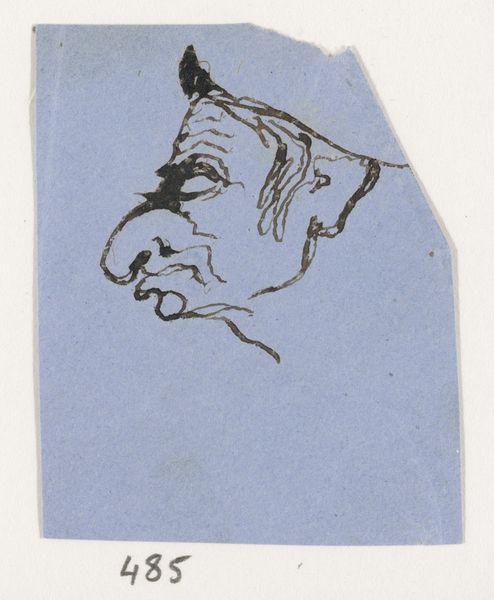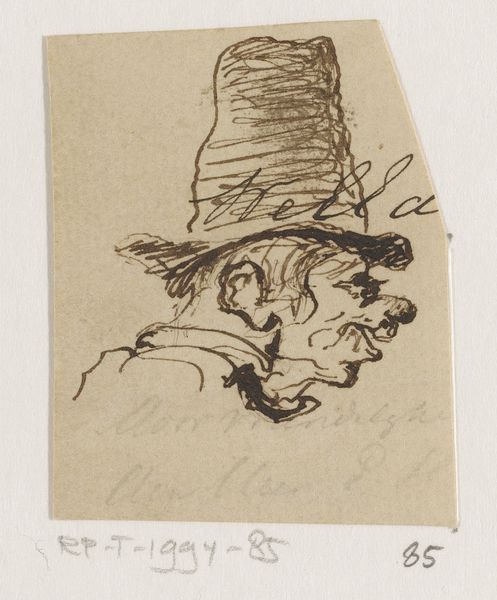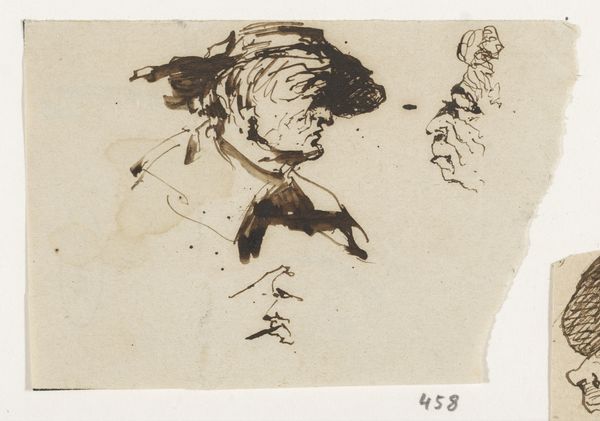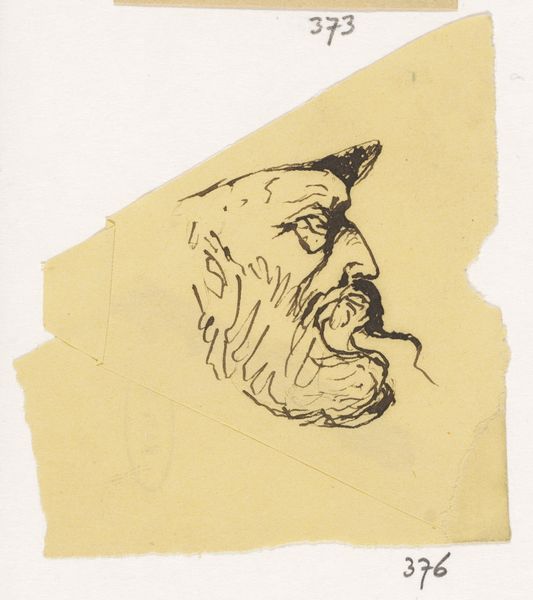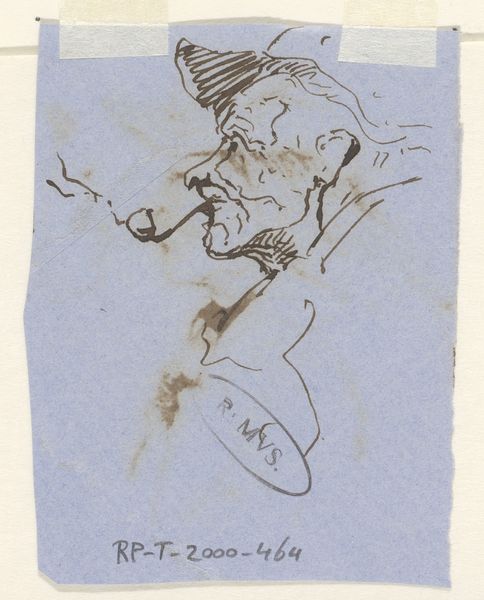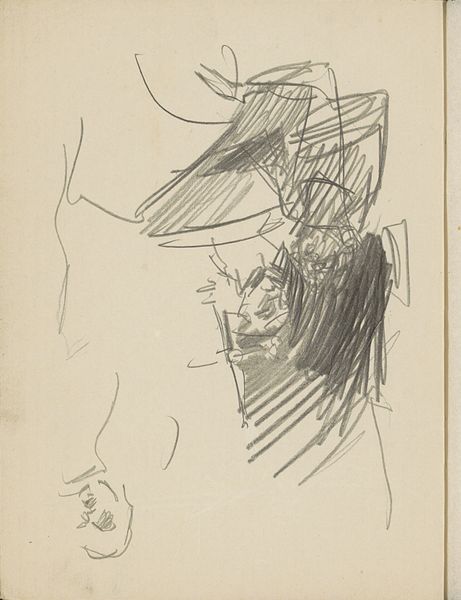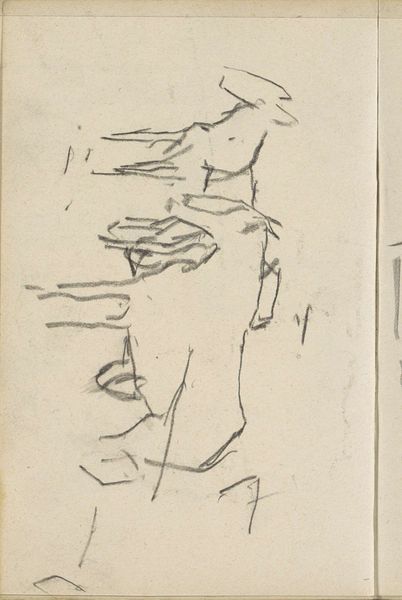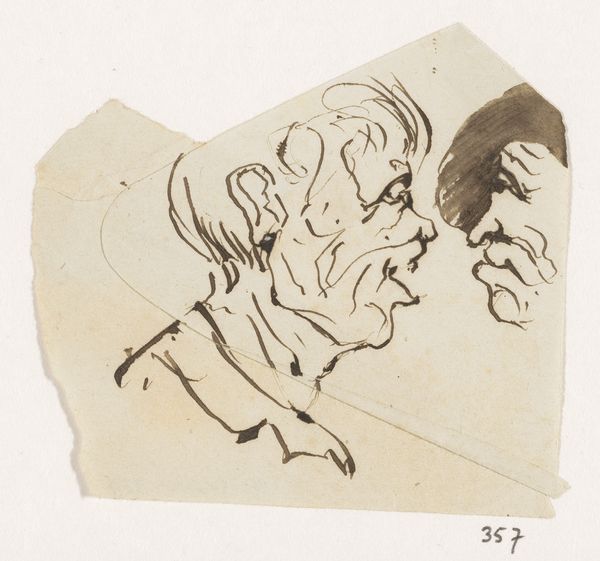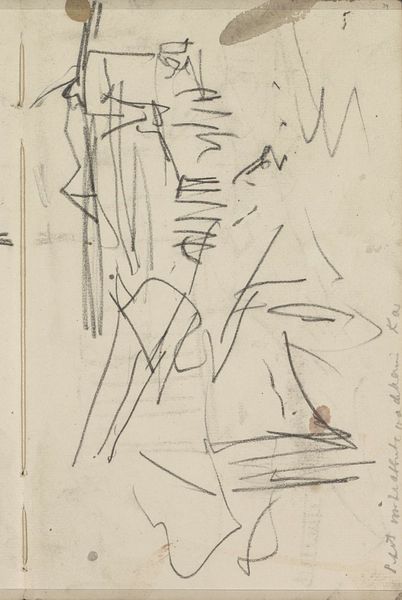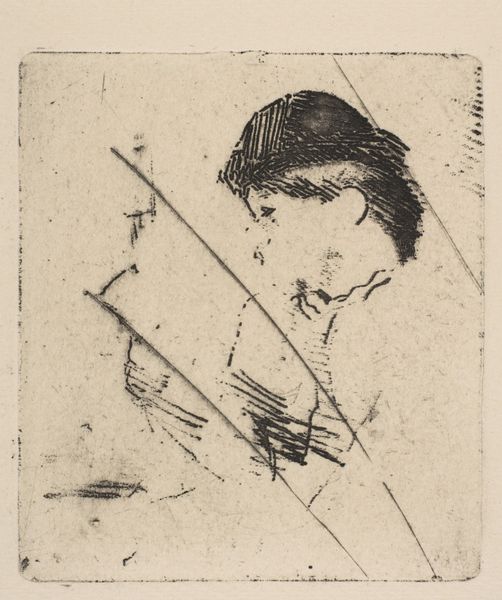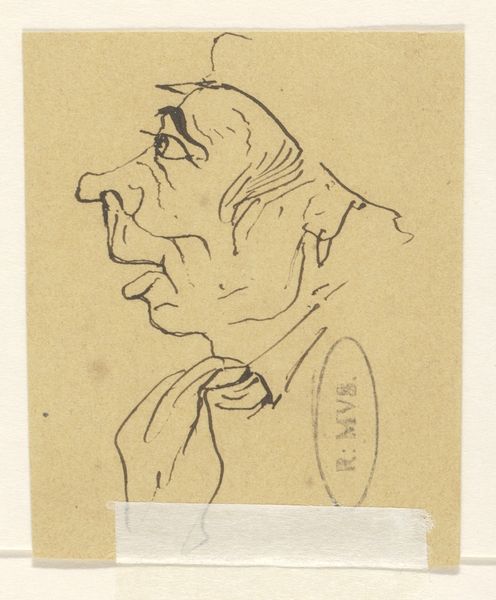
Dimensions: height 36 mm, width 25 mm
Copyright: Rijks Museum: Open Domain
Editor: So, here we have Johannes Tavenraat's "Kop," an ink drawing dating from 1840 to 1880, here at the Rijksmuseum. It’s striking how few lines create such a distinctive profile, it feels almost caricature-like but with real pathos. What stands out to you? Curator: The power lies precisely in the economy of those lines. Note how the artist employs them to suggest not just form, but also something of the sitter’s inner world. That downturned mouth, those deep set eyes under a thick brow, what story do you imagine those symbols tell? Editor: Perhaps a life of hardship, or at least a moment of deep contemplation. I’m curious about the artistic intention – was Tavenraat aiming for realism, or was there a degree of interpretation involved? Curator: "Realism" is a slippery term. While rooted in observation, the artistic choices made—the exaggeration of certain features, the shading that hints at shadow and age—reveal Tavenraat's own reading of the subject. Consider the period; Romanticism prized emotional expression. Might the artist have seen the universal struggle reflected in one man’s face? What emotions surface for you when viewing it? Editor: I think I see that struggle – the weight of existence, almost. It feels very human. Curator: Exactly. And the beauty of art lies in its ability to spark those human connections across time and space, reminding us of shared experiences. And how symbols speak even when details fade. Editor: This really puts it in a new perspective. Thank you! Curator: It was a pleasure to discuss with you. Always consider that art carries these memories, often unwritten histories in visual form.
Comments
No comments
Be the first to comment and join the conversation on the ultimate creative platform.
